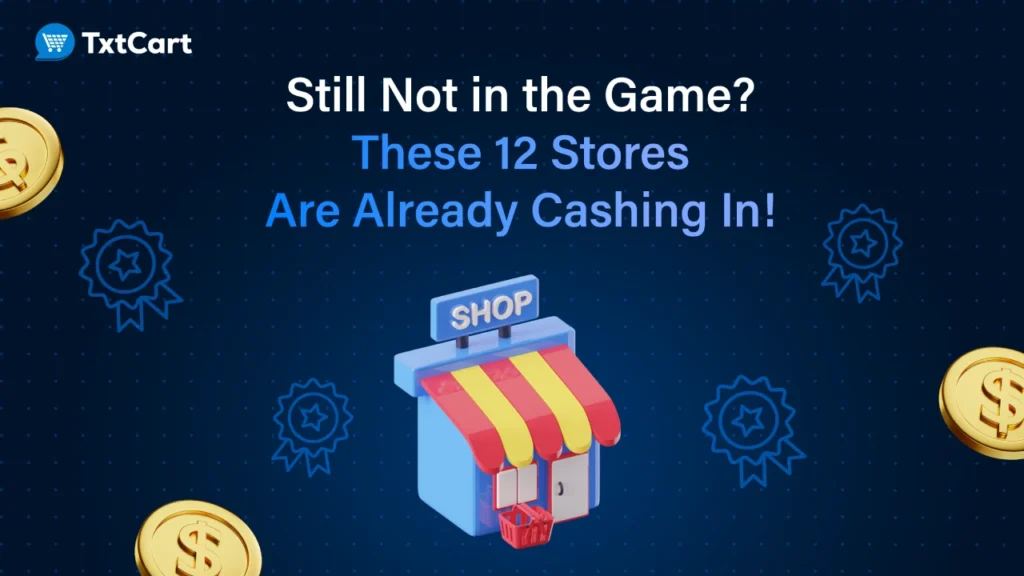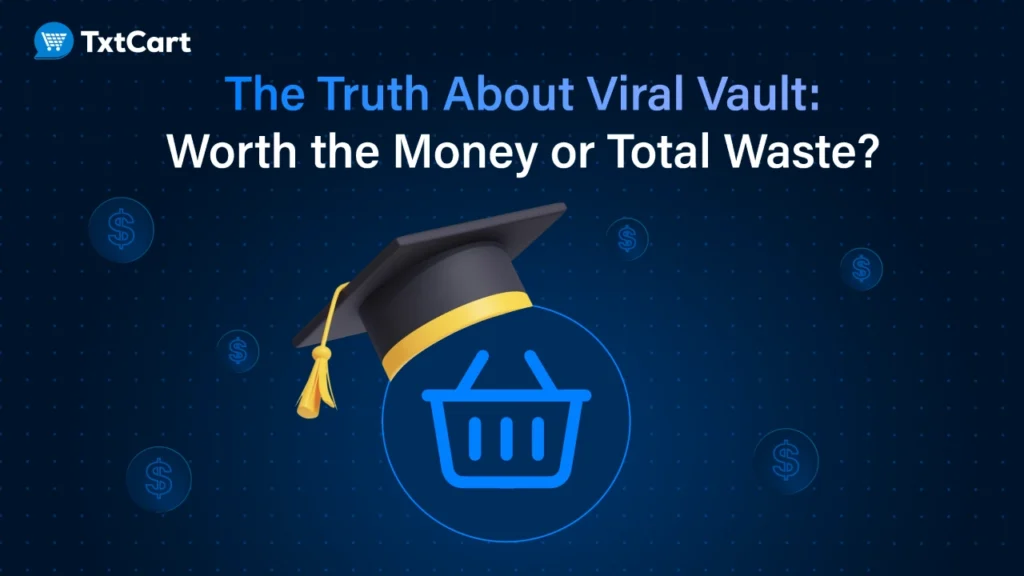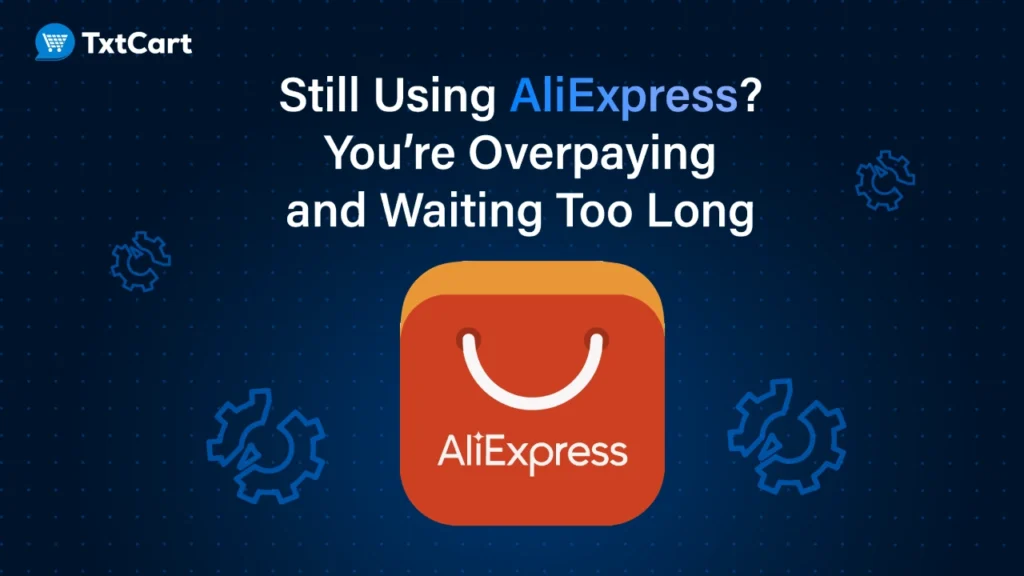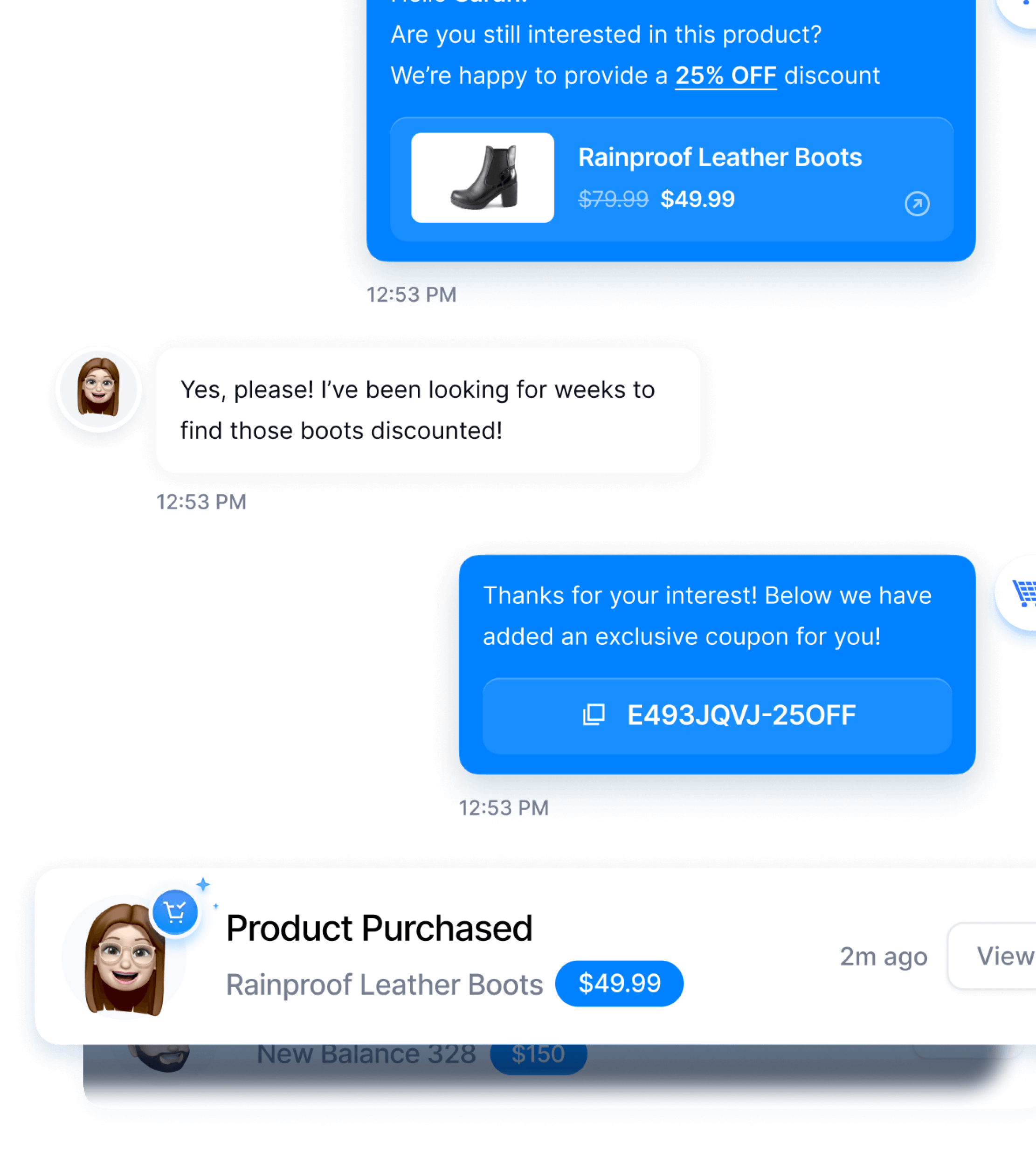Cart abandonment is the silent revenue killer that plagues eCommerce businesses of all sizes, with the average abandonment rate hovering at a staggering 70.1%. This means for every 10 potential customers who add products to their cart, 7 leave without completing their purchase—taking your potential profits with them.
In this guide we’ll cover:
- The hidden psychological factors driving shoppers to abandon their carts
- Why unexpected costs are the #1 conversion killer (and how to fix it)
- How conversational SMS strategies transform lost sales into your biggest opportunity
TL;DR
- Display total costs upfront by adding a shipping calculator on product pages and showing tax estimates to prevent 48% of abandonments caused by price shock
- Implement a 3-step checkout with progress indicators and limit form fields to only essential information to reduce the 17% of abandonments caused by complex checkout pages.
- Send recovery SMS within 1 hour of abandonment with personalized product images and offer a small incentive (10% off) only in the second message to achieve great recovery rates
- Add multiple payment options like Apple Pay and Shop Pay to your checkout page to satisfy the 9% of customers who abandon due to missing preferred payment methods
- Show delivery dates on product pages and checkout to prevent 22% of abandonments caused by unclear or slow delivery timeframes.
7 Critical Cart Abandonment Reasons (and Solutions)
Understanding why customers abandon their carts is the first step to implementing effective solutions. These seven abandonment triggers account for the majority of lost eCommerce sales, but each comes with specific, actionable solutions that can dramatically improve your conversion rates.
#1) Unexpected Extra Costs
Nearly half of all cart abandonments (48%) occur when shoppers encounter surprise costs at checkout. This “price shock” happens when customers see shipping fees, taxes, or handling charges that weren’t disclosed earlier in their shopping journey.
How to fix it:
- Add a shipping calculator to product pages so customers can check delivery costs before adding items to their cart. Position it prominently near the price and make it pre-populate with the customer’s location when possible.
- Display estimated tax in the mini-cart that appears when customers hover over their cart icon. Even a simple “Estimated total with tax: $54.25” works wonders.
- Create free shipping thresholds with clear messaging like “Add $12 more to qualify for free shipping!” This not only prevents abandonment but can actually increase average order value.
- Consider all-inclusive pricing where shipping costs are included in the product price, allowing you to advertise “free shipping” while maintaining margins.
- Show a complete cost breakdown on the cart page before customers enter the checkout flow. Include product cost, shipping, tax, and any discounts in a clean, easy-to-understand format.
#2) Complicated Checkout Process
A lengthy or confusing checkout process drives away 17% of potential customers. Each additional form field, unnecessary step, or confusing element creates friction that pushes shoppers to abandon their purchase.
How to fix it:
- Implement a 3-step maximum checkout that consolidates information collection into logical groupings (customer info → shipping → payment). Each additional step beyond three increases abandonment by approximately 10%.
- Eliminate unnecessary form fields by asking only for essential information. Do you really need both phone and email? Is a “company name” field necessary for most customers? Every field you remove increases completion rates.
- Add progress indicators that clearly show customers how far they’ve come and what steps remain. Simple breadcrumb navigation like “Information → Shipping → Payment” gives customers a sense of control and momentum.
- Enable autofill functionality for addresses and payment information. Autofills can increase form completion rates by 22%.
- Implement inline validation that confirms correct information immediately rather than waiting until form submission. Green checkmarks appearing as customers complete fields correctly provide instant feedback and keep them moving forward.
- Create a mobile-first design with thumb-friendly buttons (44px minimum size), form fields (48px height), and minimal keyboard entry requirements.
#3) Forced Account Creation
Mandatory account creation drives away 24% of potential customers. The psychology is simple: customers want to buy your products, not join your club. When faced with account creation requirements, many online shoppers perceive it as extra work without clear benefits, especially first-time customers who aren’t yet committed to your brand.
How to fix it:
- Make guest checkout the default option but present account creation as an enhanced alternative. Position them side-by-side with clear benefits listed for account creation.
- Implement post-purchase account creation by sending customers an email or SMS after their order is complete. “Your order is confirmed! Create an account to track shipping and earn rewards on this purchase.”
- Use social login options (Google, Facebook, Apple) to reduce registration friction.
- Clearly communicate the benefits of creating an account: “Save your information for faster checkout next time,” “Track your orders easily,” “Get exclusive member discounts,” or “Earn rewards on every purchase.”
- Simplify the registration process by requiring only email and password initially, then progressively collecting additional information over time through profile completion incentives.
#4) Payment Security Concerns
Security worries cause 18% of shoppers to abandon their carts. In an era of increasing online fraud, customers are rightfully cautious about sharing payment information with unfamiliar websites.
Trust isn’t automatic—it must be actively built throughout the shopping experience. Many eCommerce sites make the mistake of focusing exclusively on product and price without addressing the underlying security concerns that prevent customers from completing their purchase.
How to fix it:
- Display security badges prominently throughout the checkout process, not just in the footer. Trusted symbols like Norton, McAfee, SSL certificates, or payment processor logos should be visible near payment fields.
- Offer trusted payment alternatives like PayPal, Shop Pay, or Apple Pay that act as security intermediaries. Many customers feel more comfortable using these services than entering credit card details directly.
- Add security-focused microcopy next to payment fields: “Your payment information is encrypted and secure” or “We use bank-level encryption to protect your data.”
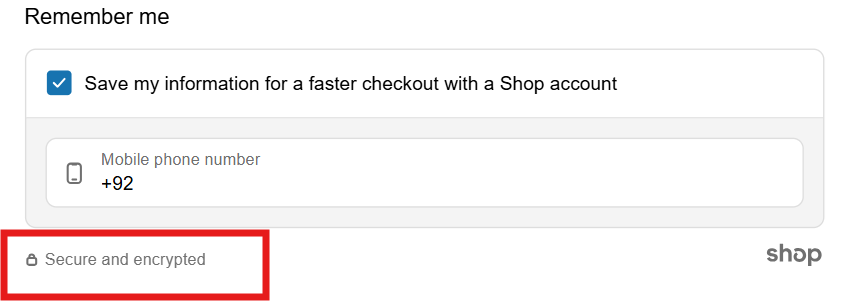
- Include customer reviews and trust signals on checkout pages. Seeing that others have successfully and safely purchased helps reduce perceived risk.
- Ensure your site uses HTTPS with a valid SSL certificate and visible security indicators in the browser address bar. Many customers now specifically look for the padlock icon before entering payment information.
#5) Slow Delivery Times
Long or unclear delivery timeframes cause 22% of cart abandonments. In today’s instant-gratification economy, customers expect fast shipping options and transparent delivery estimates.
How to fix it:
- Display specific delivery dates rather than shipping timeframes: “Get it by Friday, May 5th” is much more meaningful to customers than “3-5 business days.”
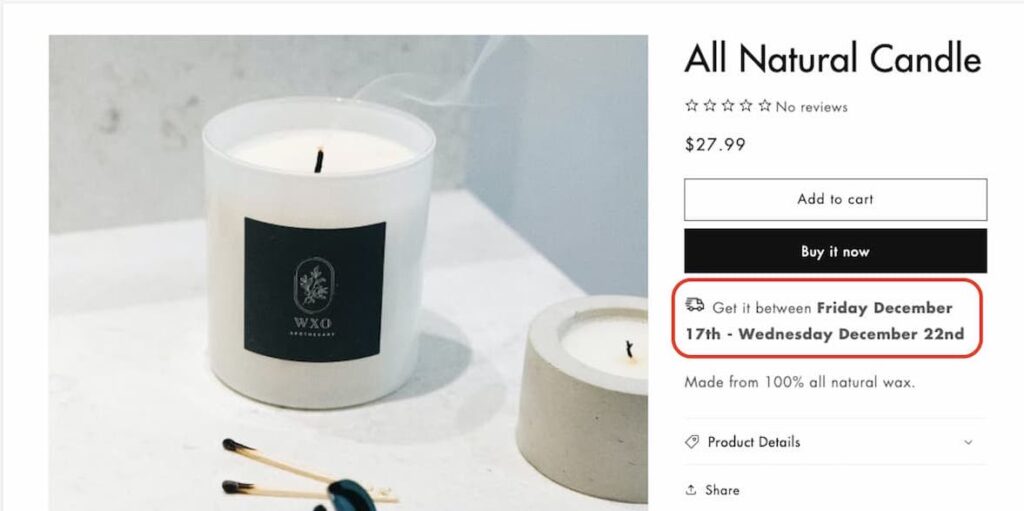
- Show delivery information on product pages so customers know timeframes before they even add items to their cart. This sets proper expectations from the beginning of the shopping journey.
- Offer multiple shipping options with clear pricing differences. Many customers are willing to pay extra for faster delivery if it’s clearly presented.”
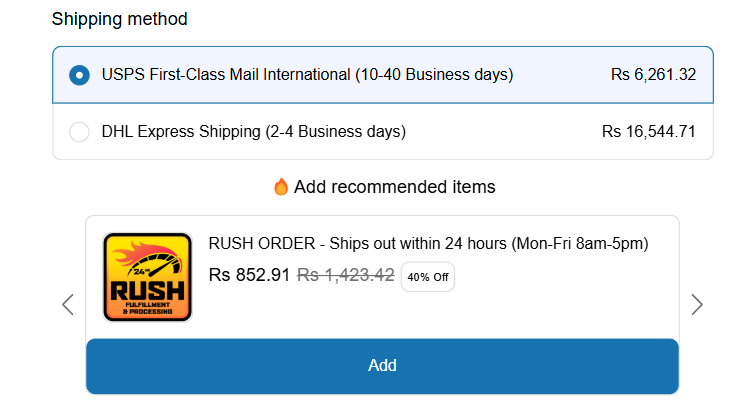
- Implement delivery date selection at checkout to give customers control over when their items arrive. This is especially valuable for gifts or time-sensitive purchases.
- Create free shipping thresholds that incentivize larger purchases: ‘Spend $75 for free shipping.’ This not only reduces abandonment but can increase average order value.
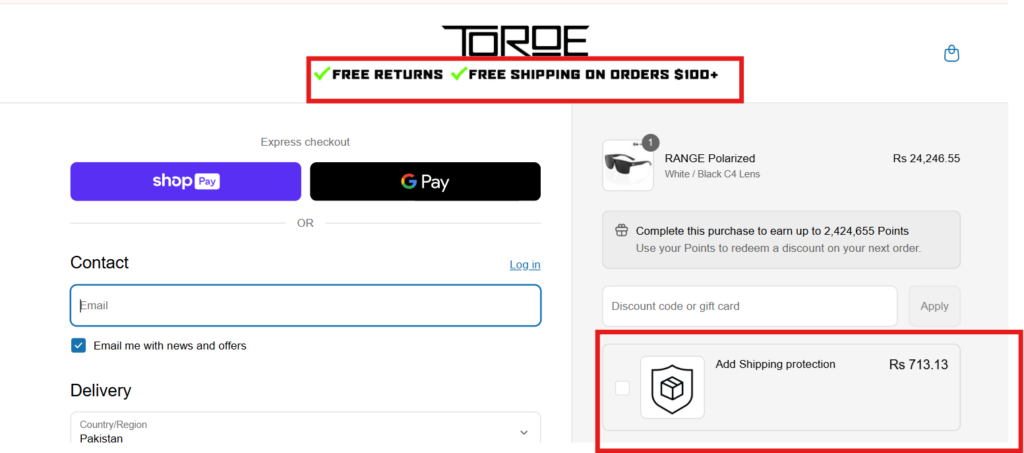
- Set up automated order tracking with proactive notifications via SMS or email. Knowing exactly where their purchase is creates confidence and reduces post-purchase anxiety.
#6) Limited Payment Options
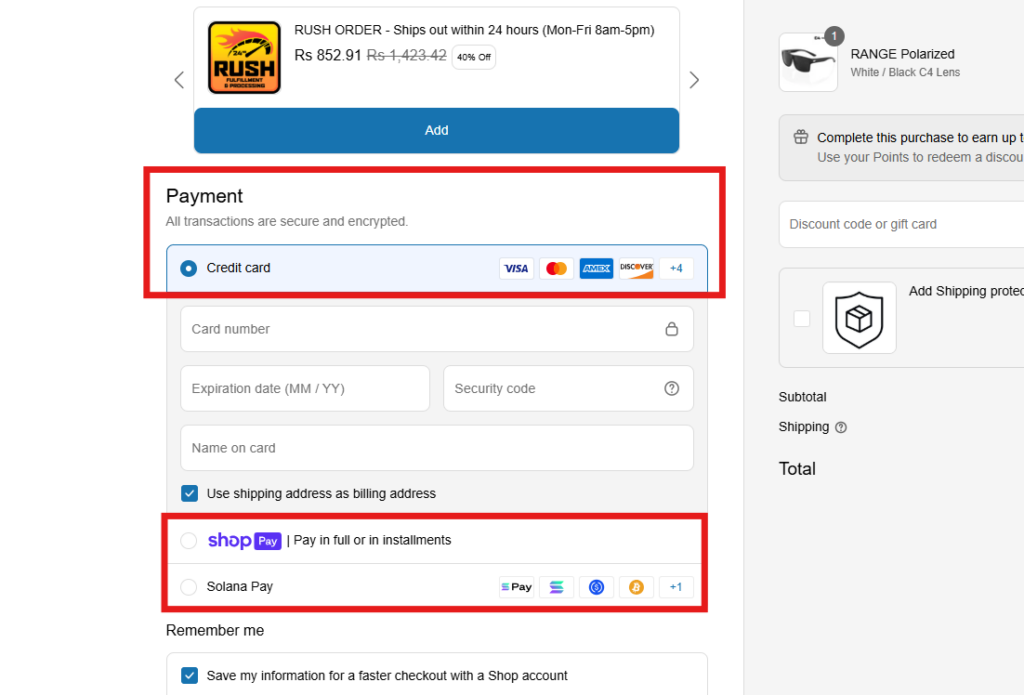
9% of customers will abandon their carts if your store doesn’t offer their preferred payment options. As payment preferences diversify beyond traditional credit cards, offering multiple options has become essential for maximizing conversions.
How to fix it:
- Implement digital wallets like Apple Pay, Google Pay, and Shop Pay that allow one-click purchasing without manual card entry.
- Add buy-now-pay-later services such as Affirm, Klarna, or Afterpay. These services can help increase average order value and are particularly effective for higher-priced items.
- Display payment options visibly throughout the site, not just at checkout. Knowing their preferred payment method is available can prevent abandonment before it happens.
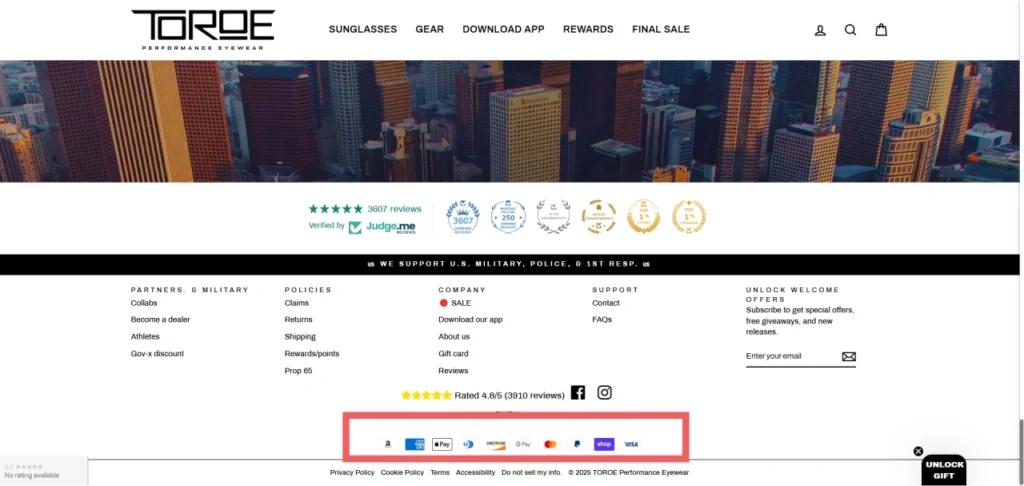
- Optimize payment method display on mobile devices with recognizable logos and simplified selection interfaces. Mobile users in particular benefit from streamlined payment options.
#7) Website or Technical Issues
13% of customers report abandoning their checkout process when they encounter technical issues like payment errors or website crashes.
What’s more shocking is that even a one-second delay in page load time can lead to a 7% drop in conversions, an 11% decrease in page views, and a 16% decline in customer satisfaction.
How to fix it:
- Optimize site speed: Compress images, minify code, and optimize server response times. Aim for page load times under 2 seconds, especially on cart and checkout pages. You can also use lazy loading for images to speed up initial page rendering.
- Test checkout functionality regularly: Ensure your checkout process works smoothly across different devices, browsers, and connection speeds. Conduct user testing with diverse audiences to catch any technical glitches that might affect specific groups. Test on mobile-first, as most traffic comes from mobile devices.
- Implement error monitoring tools: Use tools like New Relic or Sentry to monitor real-time errors, so you can address issues like payment failures or form submission errors before they affect a large number of customers.
- Use Content Delivery Networks (CDNs): Implement CDNs to distribute content efficiently across global servers, ensuring faster load times for users no matter where they are located.
Industry-Specific Abandonment Rates
Shopping Cart abandonment rates vary significantly across different industries. Understanding how your abandonment rate compares to industry benchmarks helps determine whether your current strategies need adjustment.
| Industry | Abandonment Rate | Key Abandonment Factors |
|---|---|---|
| Luxury & Jewelry | 81.39% | High price consideration, comparison shopping |
| Beauty & Personal Care | 80.92% | Product suitability, comparison shopping |
| Home & Furniture | 80.32% | High price consideration, comparison shopping |
| Fashion, Accessories & Apparel | 78.53% | Size/fit concerns, comparison shopping |
| Multi-Brand Retail | 76.90% | Wide selection leading to decision fatigue |
| Food & Beverage | 63.62% | Perishability concerns, delivery timing |
| Consumer Goods | 57.37% | Price sensitivity, product necessity |
The Psychology Behind Cart Abandonment
Understanding the psychological triggers behind cart abandonment reveals that it’s rarely just about price or convenience—it’s about how customers feel during the checkout process. These emotional and cognitive factors often operate below the surface but have profound effects on purchasing decisions.
Fear of Making the Wrong Decision
Why it happens: Customers worry they’ll regret their purchase or find a better deal elsewhere, especially for higher-priced items.
How to address it:
- Display satisfaction guarantees and return policies prominently during checkout
- Add comparison features that validate their choice against alternatives
- Include customer reviews specific to the products in their cart
- Offer price matching to remove the “what if I find it cheaper” concern
Decision Fatigue
Why it happens: After making multiple decisions while shopping, customers’ mental energy depletes, making additional choices during checkout feel overwhelming.
How to address it:
- Simplify the checkout process to require minimal decisions
- Use smart defaults based on popular choices
- Break complex processes into manageable steps with clear progress indicators
- Save customer preferences to reduce repeated decision-making
The “Just Browsing” Mindset
Why it happens: Customers often use carts as wishlist tools or research collections without immediate purchase intent. They’re in exploration mode rather than buying mode.
How to address it:
- Implement explicit “save for later” or wishlist functionality
- Send targeted reminders when prices change or stock runs low
- Use gentle re-engagement strategies rather than pushy sales tactics
5 SMS Cart Abandonment Recovery Strategies That Actually Work
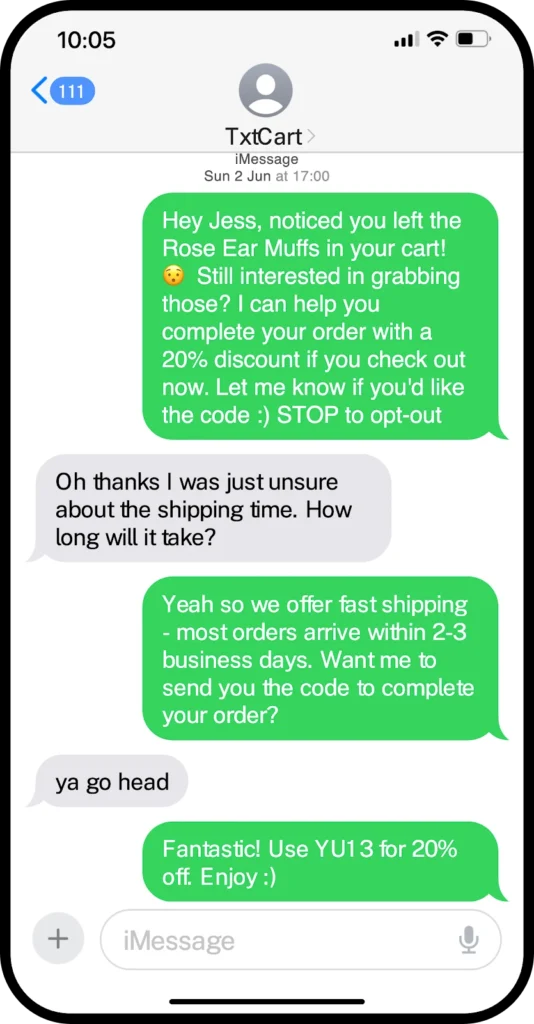
Implementing an effective SMS recovery system requires more than just sending generic reminders. Here’s how to create a recovery sequence that converts abandoned carts into completed purchases.
#1) Perfect the Timing of Your Sequence
Timing is perhaps the most critical element of successful cart recovery. Send too soon, and you might interrupt the natural shopping process; send too late, and customers have already moved on or purchased elsewhere.
The optimal SMS recovery sequence:
| Message | Timing | Content Focus |
|---|---|---|
| First Reminder | 45-60 minutes after abandonment | A gentle reminder with the product link |
| Second Reminder | 24 hours after abandonment | Small incentive (e.g., 10% off or free shipping) |
| Final Reminder | 48-72 hours after abandonment | Scarcity/urgency + larger incentive if high-value cart |
TxtCart allows you to automate this entire sequence. For example, you can set the first reminder to be sent 45 minutes after abandonment. TxtCart follows up with additional messages only if the cart remains abandoned, ensuring customers don’t receive unnecessary texts.
TxtCart Scheduler takes this a step further with timezone-aware scheduling, ensuring no customer gets a message at 2 AM (because, let’s be honest, that’s an instant opt-out).
Joyride used TxtCart’s two-way AI SMS to recover abandoned carts, generating $1.84M in SMS-attributed revenue.
Joyride, an LA-based dog harness brand, leveraged TxtCart’s 2-way SMS to generate $1,841,617 in revenue, with 23,616 sales generated and over 2.8M customer conversations, driving massive growth in their eCommerce operations.
$1,841,617
SMS Attributed Revenue
12.4x
SMS Attributed ROI
23,616
Sales Generated
“Kyle and the team at TxtCart have been instrumental in our growth. They’ve worked closely with us to create custom solutions and the results have been phenomenal. TxtCart has helped us scale significantly and provided support at every turn.“
Founder, Joyride
#2) Craft High-Converting Recovery Messages
The content of your recovery messages dramatically impacts their effectiveness. Generic “you left something in your cart” messages no longer cut through the noise.
Elements of high-converting recovery messages:
- Personalized product references – Include the specific product name or image the customer abandoned shopping carts.
- Clear, direct call-to-action – Use action verbs like “Complete,” “Finish,” or “Secure.”
- Single-focus links – One clear link that goes directly to their cart, not to your homepage
- Urgency creators – Mention limited inventory, time-limited offers, or high demand when applicable
- Problem-solving approach – Address potential objections or offer assistance
Example message sequence:
First message (45 min): “Hi [Name], your [Product] is still in your cart! Need help with anything before you complete your purchase? Reply with any questions or tap here to check out: [LINK]”
Second message (5 hrs): “Your [Product] is getting lonely in your cart, [Name]! Complete your purchase now and get free shipping with code FREESHIP: [LINK]”
Final message (24 hrs): “Last chance, [Name]! Your [Product] is in high demand and we can only hold it for 2 more hours. Secure yours now: [LINK]”
P.S. TxtCart’s AI copy assistant helps you write these high-converting SMS recovery messages in minutes, streamlining the workflow!
Want to see it in action? Here’s the abandoned cart recovery SMS Crossnet sent to recover 3,019 orders and a whopping $453,185 in revenue!
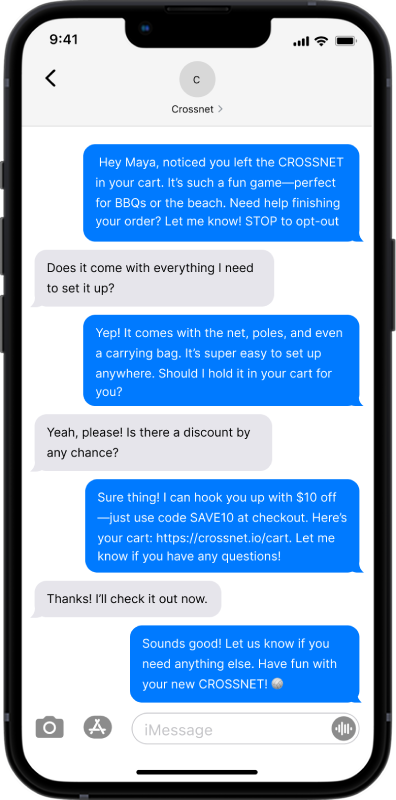
Read Next: 10 Abandoned Cart Text Message Examples You Need to Steal
#3) Implement Strategic Incentives
Not every abandoned cart requires a discount to be recovered. Strategic incentive escalation helps maximize profit margins while still recovering sales.
Effective incentive strategy:
- First message: No discount, focus on service and convenience
- Second message: Small incentive like free shipping or 10% off (if not already offered)
- Final message: Create urgency with, “Your offer expires in 24 hours!”
Advanced approach: Value-based incentives
| Cart Value | First Message | Second Message | Final Message |
|---|---|---|---|
| $0-$50 | No incentive | Free shipping | 10% off (max $5) |
| $51-$100 | No incentive | Free shipping | 10% off (max $10) |
| $101-$200 | No incentive | Free shipping + small gift | 15% off (max $25) |
| $201+ | No incentive | Free shipping + premium gift | 15-25% off |
This tiered approach ensures you’re not cutting into margins unnecessarily while still providing compelling reasons to complete purchases.
Read Next: 11 Types of Discounts to Use in SMS Marketing Campaigns to Drive More Sales
#4) Segment Your Recovery Approach
Not all abandoned carts are equal. Segmenting your recovery strategy based on customer behavior and cart characteristics significantly improves results.
Key segmentation strategies:
| Segment | Recovery Approach | Message Customization |
|---|---|---|
| First-time abandoners | Focus on trust and assistance | Emphasize customer service, reviews, and guarantees |
| Repeat abandoners | Address pattern issues | “We’ve noticed you’ve left items behind a few times – can we help?” |
| High-value carts ($200+) | White-glove treatment | Offer personal assistance or concierge checkout |
| Low-value carts | Simplify completion | Focus on quick, easy checkout process |
| Product-specific segments | Address common objections | Include FAQs or specs for frequently abandoned products |
P.S. TxtCart’s smart customer segmentation helps you target the right customers at the right time. It filters audiences based on behavior, engagement, cart status, and contact history. This ensures your recovery campaigns are as personalized and effective as possible.
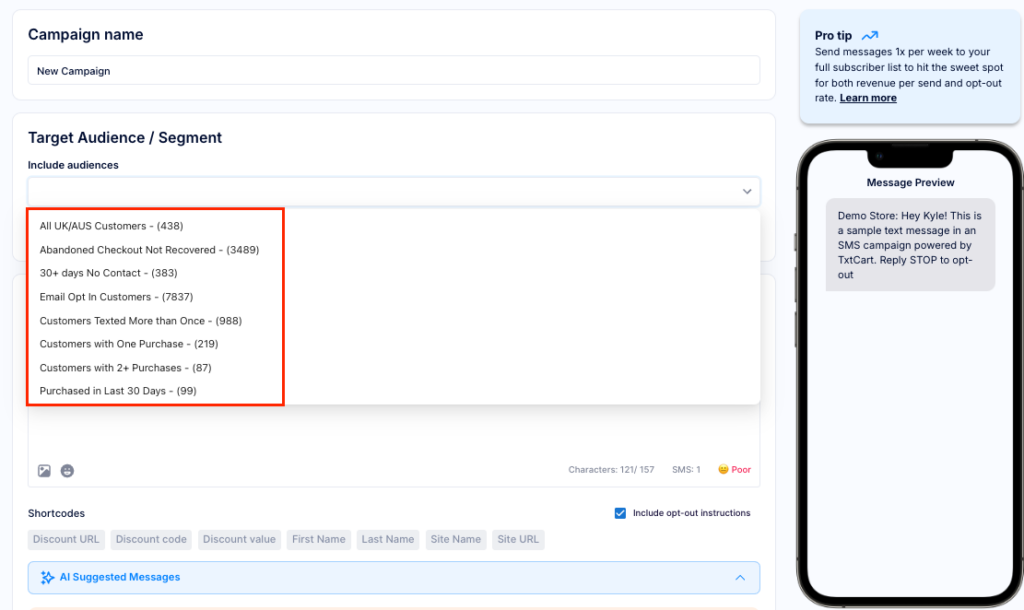
Read Next:
- What is SMS Personalization – Key Tips and Advice
- How to Send Personalized Text Messages That Sell
- What is SMS Segmentation, Best Practices & Examples
#5) Measure and Optimize Performance
The most successful cart recovery programs continuously improve based on performance data. Tracking the right metrics helps identify what’s working and what needs refinement.
Essential recovery metrics to track:
- Recovery rate: Percentage of abandoned carts that convert after SMS (benchmark: 15-30%)
- Time to recovery: How quickly customers complete purchase after receiving messages
- Message engagement: Open and click-through rates for each message in your sequence
- ROI: Revenue recovered minus campaign costs
P.S. TxtCart’s campaign and revenue analytics provide real-time visibility into these critical metrics. For instance, you can track which message in your recovery sequence generates the highest conversion rate, which products are most frequently recovered, and the overall ROI of your SMS recovery efforts.
This data allows you to continuously refine your approach, focusing resources on the strategies that deliver the best results for your specific products and customer base.
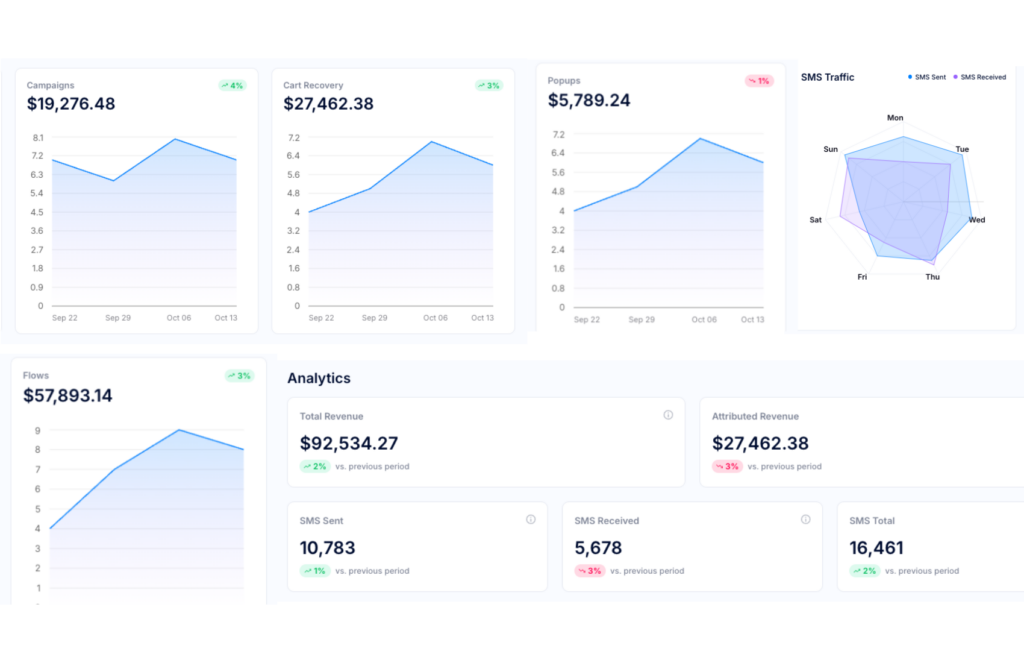
Read Next: SMS Marketing Analytics: 10 SMS Metrics You Cannot Ignore
The Future of Cart Recovery: Conversational Commerce
The next evolution in cart recovery is conversational commerce—using two-way communication to address concerns in real time and guide customers to purchase completion.
Why conversational commerce works:
- Allows customers to ask questions immediately
- Creates a personalized shopping experience
- Addresses objections in real-time
- Builds trust through human-like interaction
- Provides guidance throughout the purchase journey
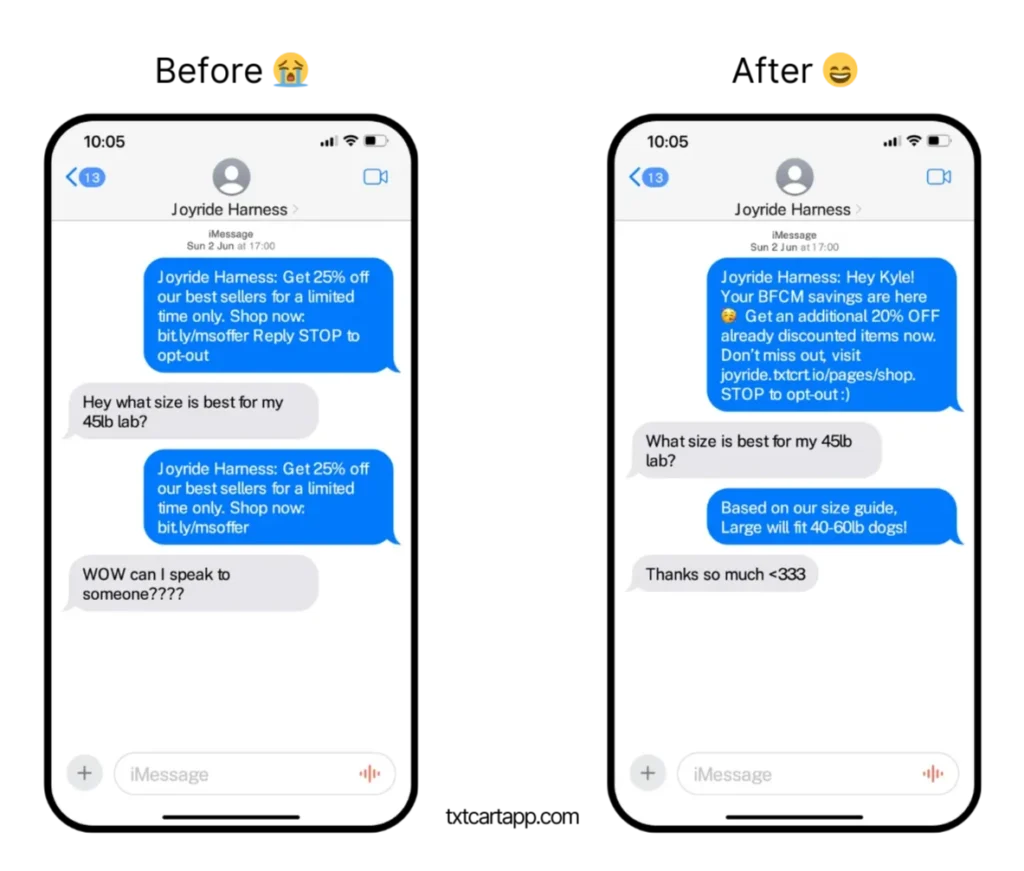
TxtCart is at the forefront of this evolution with two-way conversational SMS that enables real dialogue with customers. Unlike traditional one-way abandoned cart messages, TxtCart enables businesses to engage in actual conversations that address specific customer concerns – all while being 32x cheaper than human agents!
For example, when a customer responds to a cart recovery message with a question about product specifications or delivery options, TxtCart’s system can provide an immediate, accurate response drawn from the business’s knowledge base.
This approach helped Toroe Eyewear Recover 800+ Ordersusing TxtCart.
Toroe Eyewear, a premium performance eyewear brand, used TxtCart’s 2-way SMS to generate $60,382 in revenue, with over 3,400 conversations and a 41.23% reply rate, boosting sales and recovering 800+ orders in 8 months.
$60,382
SMS Attributed Revenue
24.8x
SMS Attributed ROI
800+
Recovered Orders

“Hands down the best SMS Marketing platform we have used thus far. TxtCart allows us to scale our advertising with the profits it generates and has been extremely user-friendly and easy to set up.”
Founder, Toroe Eyewear
And here’s another example. Chaser, a fast-fashion brand based in LA, leaned into conversational messaging with TxtCart and saw results almost immediately. They generated over $207,341 in SMS-attributed revenue in just 9 months. Abandoned carts that were once lost sales became opportunities for real conversations, boosting their recovery rate to 54%.
Chaser, an LA-based fashion brand, leveraged TxtCart’s 2-way SMS to generate $207,341 in revenue, with over 10,983 customer conversations and a 42.78% reply rate, resulting in 1,100+ orders generated.
$207,341
SMS Attributed Revenue
10.8x
SMS Attributed ROI
1,100+
Orders Generated

“Kyle and Hunter have been absolutely outstanding to work with and the platform has exceeded expectations. The ROI has been amazing and I’m excited for the future!”
CEO, Chaser Brand
Read Next:
- 9 Conversational SMS Examples That Generated $6M+
- Conversational SMS Guide: 15+ Best Examples, Uses, & Tips
Turn Abandoned Carts Into Your Greatest Opportunity with TxtCart
Abandoned carts aren’t a dead end—they’re a chance to win back lost sales. TxtCart’s automated SMS recovery, smart segmentation, and conversational AI work seamlessly to help you recover those carts and build stronger customer relationships.
Ready to turn abandonment into opportunity? TxtCart is your solution for smarter, more effective recovery.
Want to try conversational SMS for free?
- Try free for 14 days
- 10x ROI guaranteed
Read Next:


